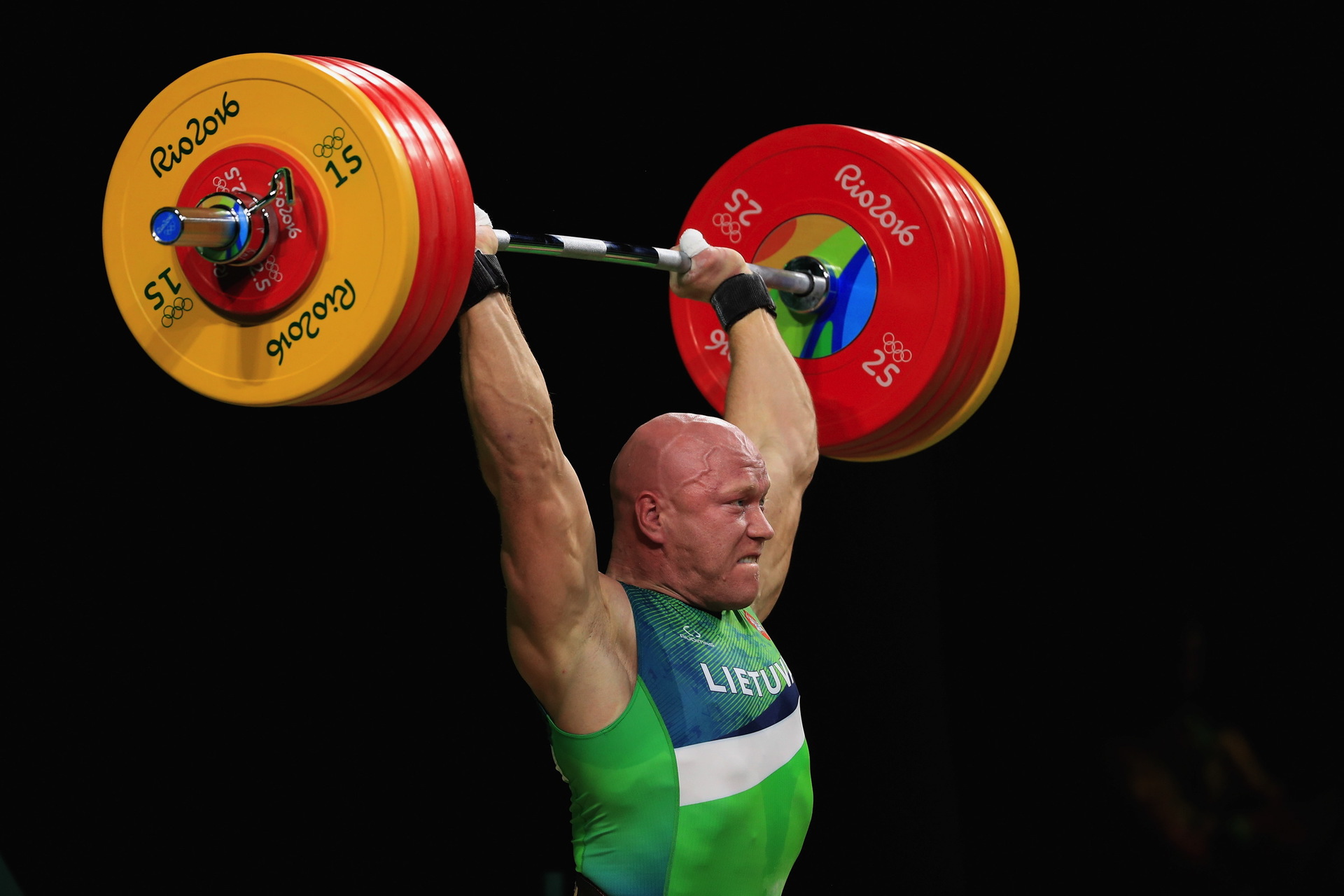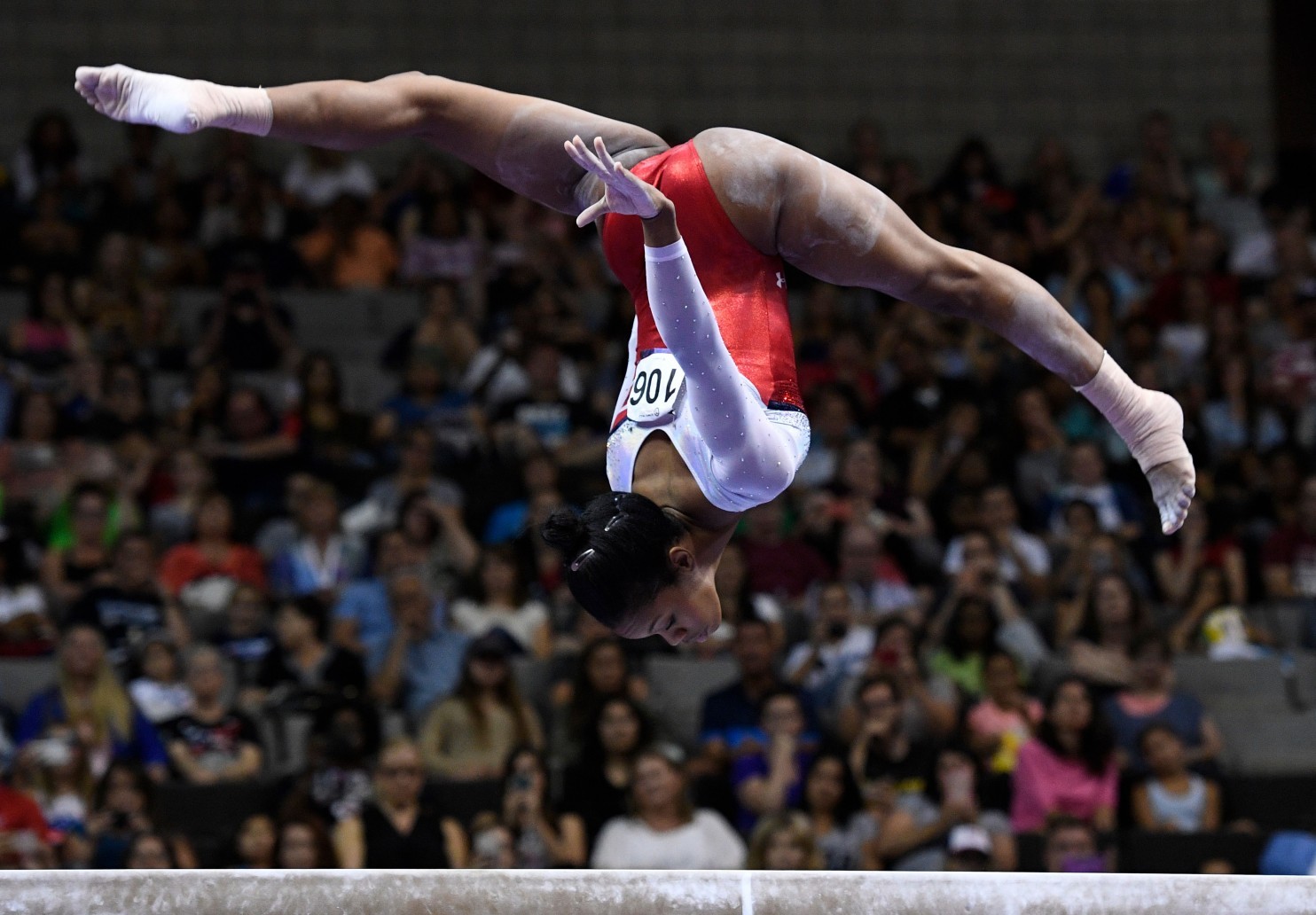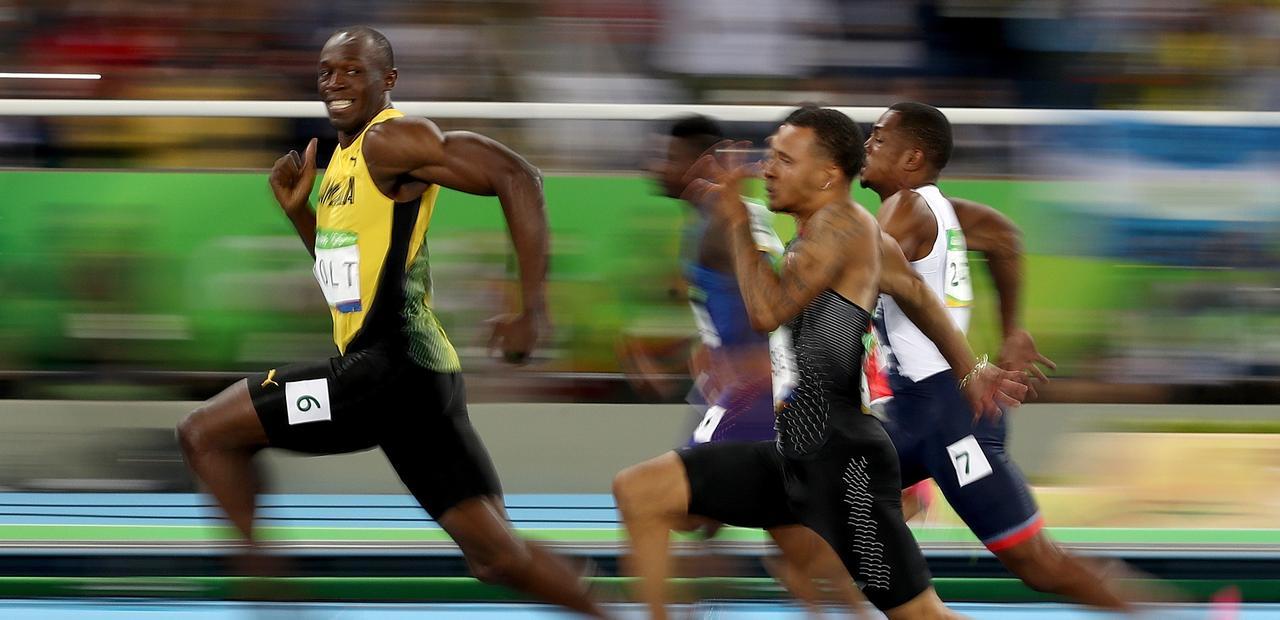Olympic genes: who becomes the winner
The Olympic Games are over - the debriefing has begun. Athletes, coaches and geneticists are interested to find out if the secret condition of victory lies in the genes. Scientists are trying to figure out why Kenyans run the marathon faster than anyone else, and wrestlers in heavy weight come from the Caucasus.
Answers to these questions are not without commercial interest - if there are genetic differences between winners and losers, then one day these differences can be corrected. Now known genes that give benefits to athletes. Some of them are presented in the Atlas genetic test .

')
The contribution of training to the ultimate success of an athlete depends on its duration, whether it is the length of the distance or the number of approaches to the projectile. They determine the pulse rate and blood pressure level. They are interconnected in a complex way, it is important to remember one thing: with a high pulse, and with high blood pressure it is dangerous to continue training, you need to slow down or take a break.
The answer to the question of how long you need to rest is in the EDN1 gene . It encodes the protein endothelin-1, which regulates the tone of the walls of blood vessels - in other words, the rate of increase and decrease in blood pressure. According to research, the rarer T allele of the rs5370 polymorphism is associated with a high risk of hypertension (high blood pressure), which means that carriers of this option need more time to rest during exercise. With the TT genotype, a decrease in high blood pressure also occurs more slowly, and too short breaks during exercise can lead to an excessive increase in blood pressure and its consequences — the formation of arterial aneurysms (including in the brain). In short, this is not a very beneficial genetic variant for athletes.

Any physical activities that go beyond the usual daily activities require more active use of the muscles. As a result of contraction and relaxation, micro-breaks occur in the muscle tissue - the very ones that cause everything to hurt the next day. These lesions require repair, which is performed including cells of the immune system. The speed of their work depends on the state of the body, the quality of nutrition and the general level of fatigue.
Insulin and its stabilizer zinc play an important role in muscle recovery. Therefore, the rate of recovery of muscle tissue after exercise depends on the zinc carrier gene SLC30A8 . He is involved in repair processes, DNA synthesis, the work of other enzymes. The rs13266634 polymorphism determines the rate of synthesis of the protein carrier. Some are lucky, and they recover faster - which gives them an advantage in building muscle.

The growth of muscle mass is accompanied by oxidative processes. Through the oxidation of glucose, the cell receives the energy necessary for vigorous activity. In normal mode, an increase in the intensity of oxidation does not pose a threat to health, but after intense physical exertion it can cause negative inflammatory processes in the body. Remember how after a workout at the redistribution of forces in the evening the temperature rises from fatigue?
In order to protect the cell from the destructive power of oxidative processes, the enzyme superoxide dismutase 2, which is encoded by the SOD2 gene , enters the battle. He works in the body of every person, but for athletes the quality of his work is crucial. After intense loads, the oxidative processes become more active, and no less active defense is required, which is provided by the SOD2 enzyme. If the genetic variant of the rs4880 polymorphism does not provide rapid synthesis of this protein, then painful inflammatory processes will constantly occur in the body after physical exertion. Most likely it will become an obstacle to a successful sports career in intensive sports. There are only power disciplines.

For energy, the human body needs oxygen and glucose. The work of some muscles - for example, respiratory and cardiac - requires the maximum cost of oxygen, while other muscles can use other oxidants, albeit less effective. For training these two groups of muscles were developed training - aerobic and anaerobic, respectively.
Aerobic exercises include low intensity exercises such as running, walking, swimming, skateboarding and skating. Aerobic capacity is the ability of muscles to take oxygen to perform oxidative reactions, which also affects the amount of myoglobin - the traps of oxygen molecules that deliver hemoglobin to muscles.
The process of saturation of muscles with oxygen determines several genes, one of them - NFIA-AS2 . It encodes RNA, which reduces the expression of the NFIA gene, which is responsible for transcription and DNA replication. Version C of the rs1572312 polymorphism provides its owner with a high aerobic capacity, and therefore good endurance.

However, endurance is determined not only by the anaerobic capacity of the muscles: this is a whole complex of signs, which scientists did not manage to calculate completely. However, the contribution of genetics to endurance has something to say. Only we will talk about phenotypes, which include several dozen signs.
In 2008, British scientists conducted a large-scale study that compared the genetic profiles of athletes and non-athletes in 23 polymorphisms. For 100%, they took the option when the allele responsible for increased endurance is determined for all snippets. As a result of comparing the abstract profile and the real phenotypes of athletes and non-competitors, it turned out that 99% of the population has a typical level of endurance, which varies by 7 polymorphisms (out of 23). And the probability of the emergence of a “super-durable” person with a “five” for each item is 0.0005%.

When genetics does not give any advantages, the will to victory, the persistence of the winner and other high moral qualities are used. But it turned out that they are also determined by genes - partly.
Scientists compared the profiles of Olympians and amateur athletes in terms of the expression of 4 genes: MSTN (myostatin), 5HTT (serotonin transporter), DAT (dopamine transporter) and MAOA (neurotransmitter deactivation). It turned out that the correlation between the level of professionalism of an athlete and the variant of the DAT1 gene, which encodes the dopamine transporter protein, the “hormone” of satisfaction, is best traced. The higher the expression of the gene, the faster the reaction of “reward” and pleasure ends - and therefore the sooner the athlete can return to training to achieve a better result.
Ironically, the best result is achieved not by those who get more pleasure from the sport, but on the contrary, athletes who are almost never satisfied with their results, and they always need the most. Perhaps they are not so happy, but their success delights the hearts of millions of fans.

As you can see, genetics only partly defines the limits of your athletic potential - and sometimes in completely unexpected ways. So nothing can stop you on the way to the goal.
And what kind of sports is better to choose - prompted by the genetic test "Atlas" . Olympic discount of 5% until the end of August by promo code RIO2016.
Answers to these questions are not without commercial interest - if there are genetic differences between winners and losers, then one day these differences can be corrected. Now known genes that give benefits to athletes. Some of them are presented in the Atlas genetic test .

')
EDN1: blood pressure recovery
The contribution of training to the ultimate success of an athlete depends on its duration, whether it is the length of the distance or the number of approaches to the projectile. They determine the pulse rate and blood pressure level. They are interconnected in a complex way, it is important to remember one thing: with a high pulse, and with high blood pressure it is dangerous to continue training, you need to slow down or take a break.
The answer to the question of how long you need to rest is in the EDN1 gene . It encodes the protein endothelin-1, which regulates the tone of the walls of blood vessels - in other words, the rate of increase and decrease in blood pressure. According to research, the rarer T allele of the rs5370 polymorphism is associated with a high risk of hypertension (high blood pressure), which means that carriers of this option need more time to rest during exercise. With the TT genotype, a decrease in high blood pressure also occurs more slowly, and too short breaks during exercise can lead to an excessive increase in blood pressure and its consequences — the formation of arterial aneurysms (including in the brain). In short, this is not a very beneficial genetic variant for athletes.

SLC30A8: recovery of muscle tissue
Any physical activities that go beyond the usual daily activities require more active use of the muscles. As a result of contraction and relaxation, micro-breaks occur in the muscle tissue - the very ones that cause everything to hurt the next day. These lesions require repair, which is performed including cells of the immune system. The speed of their work depends on the state of the body, the quality of nutrition and the general level of fatigue.
Insulin and its stabilizer zinc play an important role in muscle recovery. Therefore, the rate of recovery of muscle tissue after exercise depends on the zinc carrier gene SLC30A8 . He is involved in repair processes, DNA synthesis, the work of other enzymes. The rs13266634 polymorphism determines the rate of synthesis of the protein carrier. Some are lucky, and they recover faster - which gives them an advantage in building muscle.

SOD2: oxidation level after exercise
The growth of muscle mass is accompanied by oxidative processes. Through the oxidation of glucose, the cell receives the energy necessary for vigorous activity. In normal mode, an increase in the intensity of oxidation does not pose a threat to health, but after intense physical exertion it can cause negative inflammatory processes in the body. Remember how after a workout at the redistribution of forces in the evening the temperature rises from fatigue?
In order to protect the cell from the destructive power of oxidative processes, the enzyme superoxide dismutase 2, which is encoded by the SOD2 gene , enters the battle. He works in the body of every person, but for athletes the quality of his work is crucial. After intense loads, the oxidative processes become more active, and no less active defense is required, which is provided by the SOD2 enzyme. If the genetic variant of the rs4880 polymorphism does not provide rapid synthesis of this protein, then painful inflammatory processes will constantly occur in the body after physical exertion. Most likely it will become an obstacle to a successful sports career in intensive sports. There are only power disciplines.

NFIA-AS2: aerobic muscle capacity
For energy, the human body needs oxygen and glucose. The work of some muscles - for example, respiratory and cardiac - requires the maximum cost of oxygen, while other muscles can use other oxidants, albeit less effective. For training these two groups of muscles were developed training - aerobic and anaerobic, respectively.
Aerobic exercises include low intensity exercises such as running, walking, swimming, skateboarding and skating. Aerobic capacity is the ability of muscles to take oxygen to perform oxidative reactions, which also affects the amount of myoglobin - the traps of oxygen molecules that deliver hemoglobin to muscles.
The process of saturation of muscles with oxygen determines several genes, one of them - NFIA-AS2 . It encodes RNA, which reduces the expression of the NFIA gene, which is responsible for transcription and DNA replication. Version C of the rs1572312 polymorphism provides its owner with a high aerobic capacity, and therefore good endurance.

Endurance
However, endurance is determined not only by the anaerobic capacity of the muscles: this is a whole complex of signs, which scientists did not manage to calculate completely. However, the contribution of genetics to endurance has something to say. Only we will talk about phenotypes, which include several dozen signs.
In 2008, British scientists conducted a large-scale study that compared the genetic profiles of athletes and non-athletes in 23 polymorphisms. For 100%, they took the option when the allele responsible for increased endurance is determined for all snippets. As a result of comparing the abstract profile and the real phenotypes of athletes and non-competitors, it turned out that 99% of the population has a typical level of endurance, which varies by 7 polymorphisms (out of 23). And the probability of the emergence of a “super-durable” person with a “five” for each item is 0.0005%.

DAT1: enthusiasm
When genetics does not give any advantages, the will to victory, the persistence of the winner and other high moral qualities are used. But it turned out that they are also determined by genes - partly.
Scientists compared the profiles of Olympians and amateur athletes in terms of the expression of 4 genes: MSTN (myostatin), 5HTT (serotonin transporter), DAT (dopamine transporter) and MAOA (neurotransmitter deactivation). It turned out that the correlation between the level of professionalism of an athlete and the variant of the DAT1 gene, which encodes the dopamine transporter protein, the “hormone” of satisfaction, is best traced. The higher the expression of the gene, the faster the reaction of “reward” and pleasure ends - and therefore the sooner the athlete can return to training to achieve a better result.
Ironically, the best result is achieved not by those who get more pleasure from the sport, but on the contrary, athletes who are almost never satisfied with their results, and they always need the most. Perhaps they are not so happy, but their success delights the hearts of millions of fans.

As you can see, genetics only partly defines the limits of your athletic potential - and sometimes in completely unexpected ways. So nothing can stop you on the way to the goal.
And what kind of sports is better to choose - prompted by the genetic test "Atlas" . Olympic discount of 5% until the end of August by promo code RIO2016.
Source: https://habr.com/ru/post/396901/
All Articles